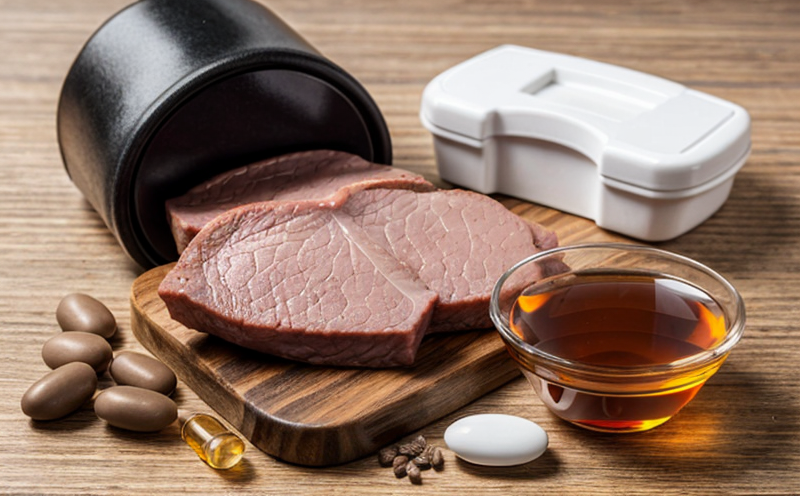Gamma-Glutamyl Transferase (GGT) Testing in Veterinary Diagnostics
The Gamma-Glutamyl Transferase (GGT) test is a critical diagnostic tool used to assess liver health and function. This enzyme plays an essential role in the metabolism of various substances, including amino acids, drugs, and toxins. In veterinary diagnostics, GGT testing helps veterinarians identify hepatobiliary disorders such as cholestasis, hepatic necrosis, and biliary obstruction. By measuring GGT levels, healthcare professionals can monitor the effectiveness of treatments and ensure that the liver is functioning optimally.
The normal range for gamma-glutamyl transferase in dogs and cats is typically between 5-40 U/L (International Units per liter). However, this can vary depending on factors such as age, breed, and health status. Elevated GGT levels may indicate a problem with the liver or bile ducts, while low levels are generally not of concern.
For accurate testing, blood samples should be collected following specific guidelines to ensure that the results reflect true physiological conditions. Proper specimen preparation is crucial; this involves ensuring that the sample does not undergo any changes in temperature, pH, or exposure to light before analysis. The use of appropriate anticoagulants and separation techniques ensures the integrity of the sample.
The instrumentation used for GGT testing should comply with international standards such as ISO 15189. This standard provides guidelines for quality management systems in medical laboratories, ensuring that results are accurate and reliable. Compliance with these standards is essential to maintain trust and confidence in veterinary diagnostics.
When interpreting GGT test results, veterinarians must consider not only the numerical value but also clinical signs and other laboratory findings. A combination of tests can provide a more comprehensive understanding of the patient's condition. For instance, combining GGT with alanine transaminase (ALT) and aspartate transaminase (AST) can help differentiate between different types of liver disease.
In addition to its role in diagnosing liver disorders, GGT testing is also used in monitoring the efficacy of treatments for hepatic diseases. Regular monitoring allows veterinarians to adjust treatment plans promptly if necessary. This proactive approach ensures that patients receive the best possible care and improves their chances of recovery.
The importance of accurate and consistent GGT testing cannot be overstated. It forms a crucial part of comprehensive liver function assessments, providing valuable insights into the health of an animal's liver. By incorporating GGT testing into routine veterinary practices, healthcare professionals can enhance patient outcomes and improve overall quality of care.
- ISO 15189 Compliance: Ensures accurate and reliable results through strict quality control measures.
- Sample Preparation: Proper collection and handling techniques are essential for obtaining valid test results.
- Instrumentation: Use of high-quality, internationally recognized equipment guarantees consistent and precise measurements.
Why It Matters
The significance of Gamma-Glutamyl Transferase (GGT) testing in veterinary diagnostics cannot be overstated. This enzyme is a key indicator of hepatobiliary disorders, providing valuable information about the health and function of an animal's liver. By detecting elevated GGT levels early on, veterinarians can intervene promptly, potentially preventing more severe complications.
Early diagnosis is crucial because it allows for timely treatment adjustments, which can significantly improve patient outcomes. For instance, if a dog or cat is undergoing chemotherapy, monitoring GGT levels helps ensure that the therapy does not adversely affect liver function. In cases where surgery might be necessary, knowing the preoperative GGT levels ensures that the animal's condition is stable and reduces risks during anesthesia.
Moreover, regular follow-up testing allows veterinarians to track the progression of diseases over time. This longitudinal approach helps in making informed decisions about long-term management strategies. For chronic conditions like cirrhosis or fatty liver disease, ongoing monitoring provides critical data that guides treatment plans.
The ability to detect subtle changes in GGT levels also aids in early intervention for acute cases. If a sudden increase is observed, it could signal an impending crisis that requires immediate attention. This proactive stance can save lives by preventing further damage to the liver and other organs.
Lastly, GGT testing contributes to the overall quality of care by enhancing diagnostic accuracy and patient safety. By integrating this test into standard protocols, veterinarians demonstrate a commitment to providing top-notch healthcare services that meet international standards.
Industry Applications
In the veterinary industry, Gamma-Glutamyl Transferase (GGT) testing is widely used across various sectors including small animal practice, large animal medicine, and zoo medicine. Small animal practitioners often use GGT tests to diagnose hepatobiliary disorders in dogs and cats. Large animal veterinarians may employ this test when dealing with cattle, horses, or other farm animals experiencing liver-related issues.
Zoo veterinarians also rely on GGT testing to monitor the health of exotic pets such as primates, birds, and reptiles. In these cases, accurate diagnosis is vital given the unique physiological differences between species compared to domesticated animals. The test helps identify potential problems early, ensuring timely interventions that can prevent irreversible damage.
The application of GGT testing extends beyond clinical diagnostics into research settings where it aids in understanding the pathophysiology of liver diseases. Researchers use this enzyme as a biomarker for studying various conditions affecting animal health globally.
Quality and Reliability Assurance
- Precision: The precision of GGT testing is paramount; variations in measurement can lead to misdiagnosis. Ensuring that the instrument used adheres strictly to ISO 15189 standards guarantees consistent results.
- Sensitivity: High sensitivity ensures that even slight increases in GGT levels are detected, allowing for early intervention.
- Specificity: Specificity refers to the ability of the test to accurately identify true positives without false negatives. This is crucial when diagnosing liver conditions where timely treatment could save a life.
- Calibration: Regular calibration checks ensure that the instrument remains accurate over time, reducing errors due to drift or degradation.
- Quality Control: Implementing robust quality control measures helps maintain the reliability of GGT tests. This includes using standardized reference materials and participating in proficiency testing programs recognized internationally.





